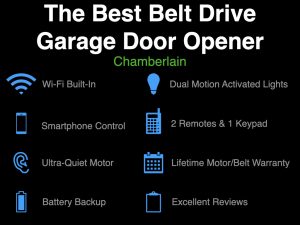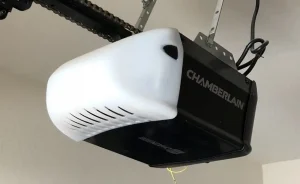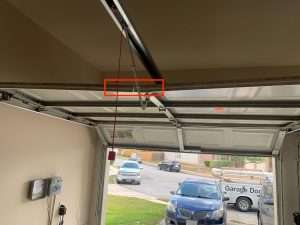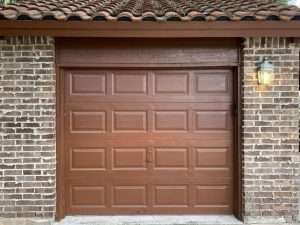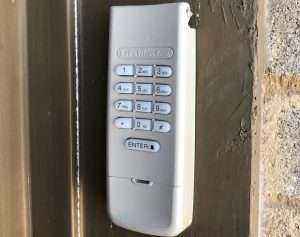How To Align or Replace Garage Door Sensors
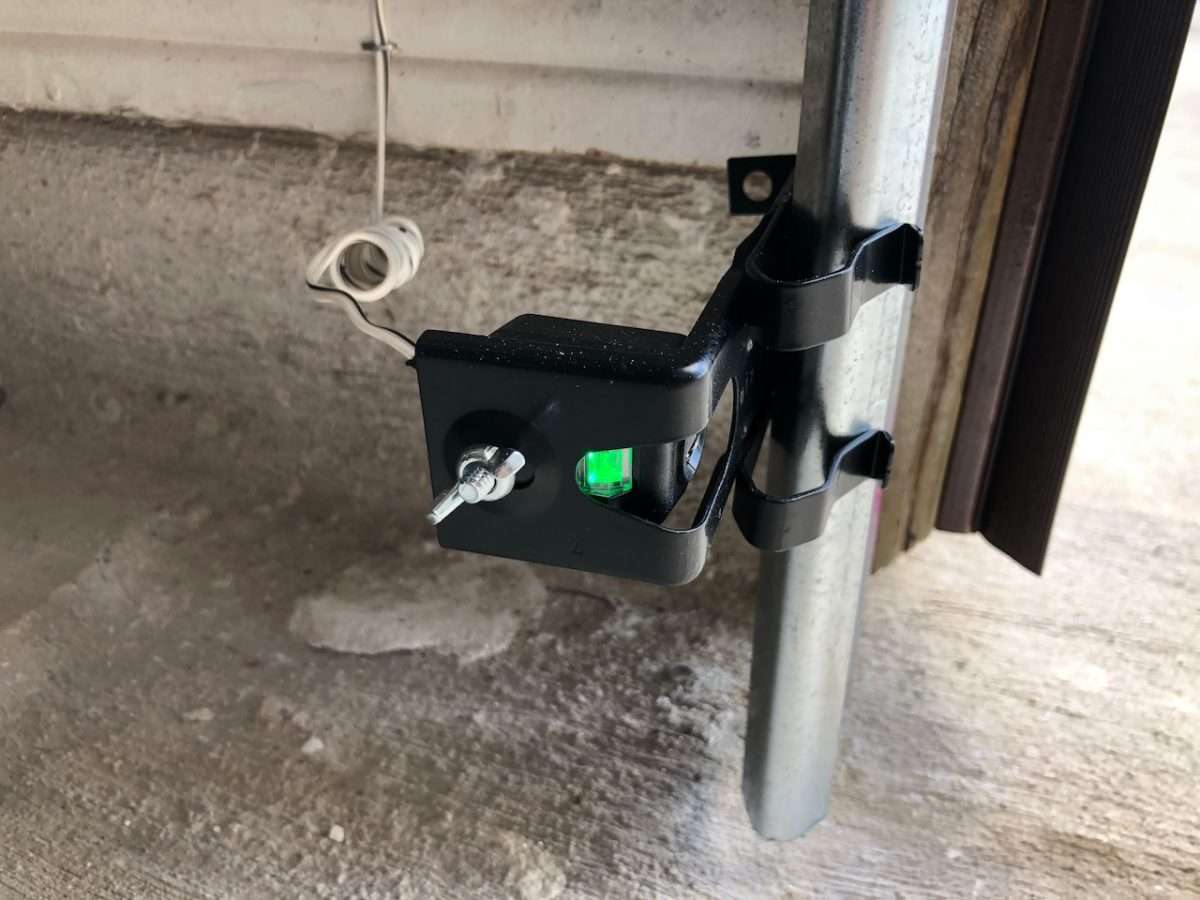
The most frustrating part of owning a garage door for any homeowner is keeping the safety sensors aligned properly. Safety sensor related issues are one of the most common phone calls a garage door company will receive. They might even be more popular than the phone call we receive for a broken spring.
Safety sensors on garage door openers can be a thorn in the side of homeowners, but they are required to be installed properly for the safety of people and pets. In this article, we are going to explain what safety sensors are and also answer the most common questions related to aligning and replacing garage door sensors.
What are Garage Door Opener Safety Sensors?
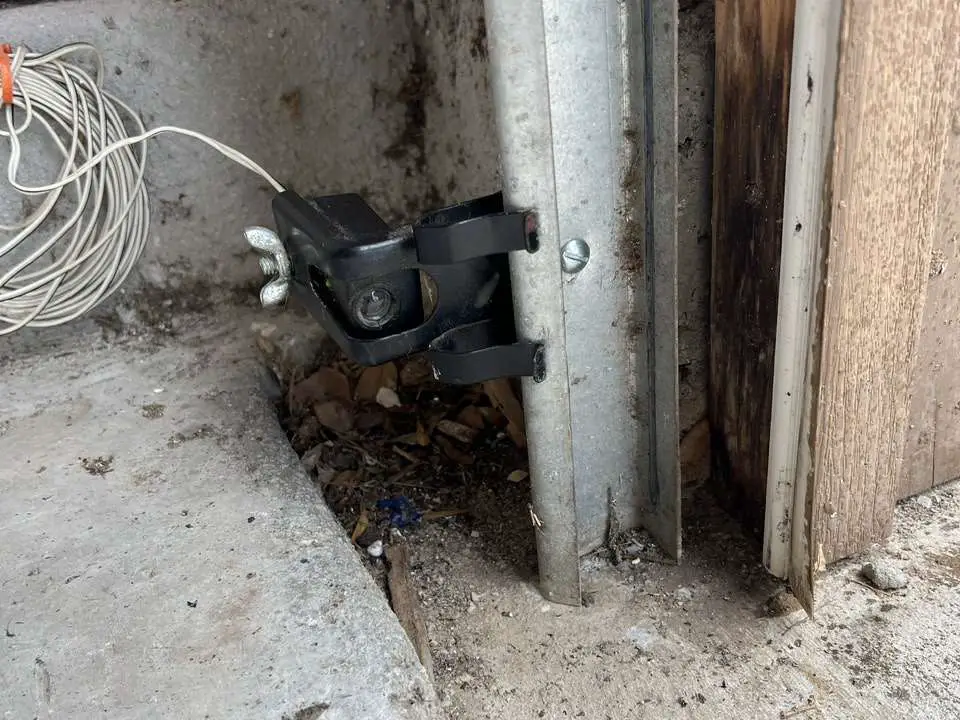
Safety sensors included with automatic garage door openers are infrared sensors that make an invisible connection by using a “sending” sensor and a “receiving” sensor. The sending sensor shoots a beam over to the receiver, which completes the loop and tells the opener that nothing is in the way when closing.
Contrary to popular belief, safety sensors are only active on the down cycle. They are not active during the garage door open cycle. If you are having issues opening your garage door, you most likely have something wrong with the door itself, like a broken spring.
Are Both Garage Door Safety Sensors the Same?
No. One sensor is a sender and the other safety sensor is a receiver. This is why the lights shining on the sensors are usually different colors. Some manufacturers in the past used the same colors for both sides, but today you will typically see a different color on each side.
For instance, the Genie Company will use red and green, while the Chamberlain Company will use green and amber. We will go into greater detail about safety sensor light colors in the following sections.
What Color Should My Garage Door Sensor Lights Be?
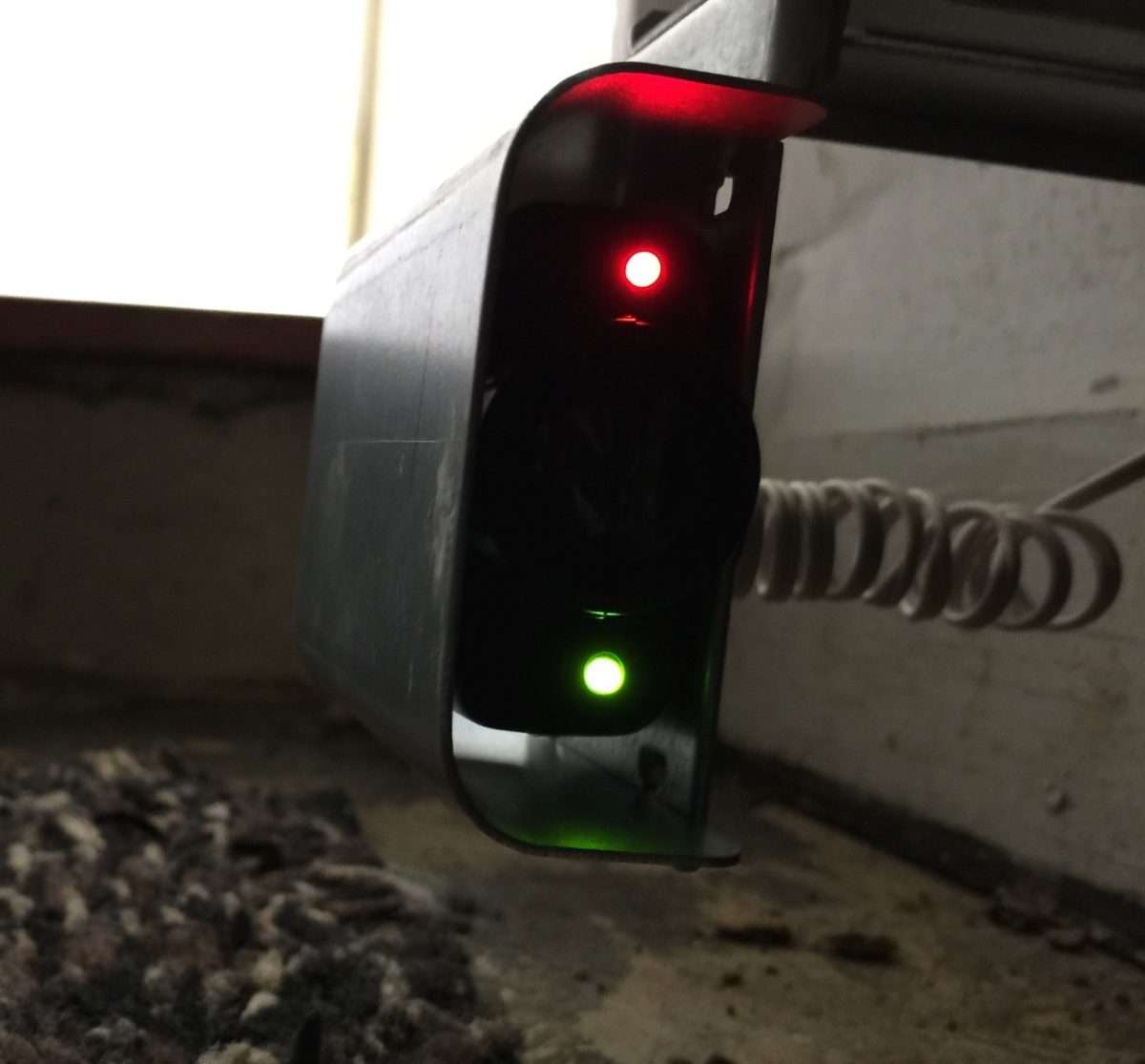
Chamberlain, LiftMaster, and Craftsman Openers
- Orange and Green
- Orange light on sender, Green light on receiver.
- Green light flashes on newer units when obstructed. On older units, the green light will be off when obstructed.
Genie Openers
- Green and Red
- Green light on sender, Red light on receiver.
- Red light flashes when obstructed.
Linear Openers
- Green and Green/Red
- Green light on sender, Green/Red lights on receiver.
- Red light is off when obstructed.
Marantec Openers
- Green and Red
- Green light on sender, Red light on receiver.
- Green light flashes when obstructed.
Guardian Openers
- Green and Red
- Green light on sender, Red light on receiver.
- Green light flashes and Red light dims when obstructed.
- DC openers will beep 20 times and AC opener for 30 seconds if sensors are misaligned
LiftMaster, Chamberlain, and Craftsman Safety Sensor Light Colors
There is a lot of confusion among homeowners when it comes to garage door sensor light colors. Many times, a homeowner will walk outside and see two different colors and automatically assume something is not right.
Because we have been trained in American society that green means “go”, most people assume any other color on the safety sensor means something is wrong. Let’s answer some of the most common questions related to garage door sensor lights.
Why Is One of My Garage Door Sensors Yellow?
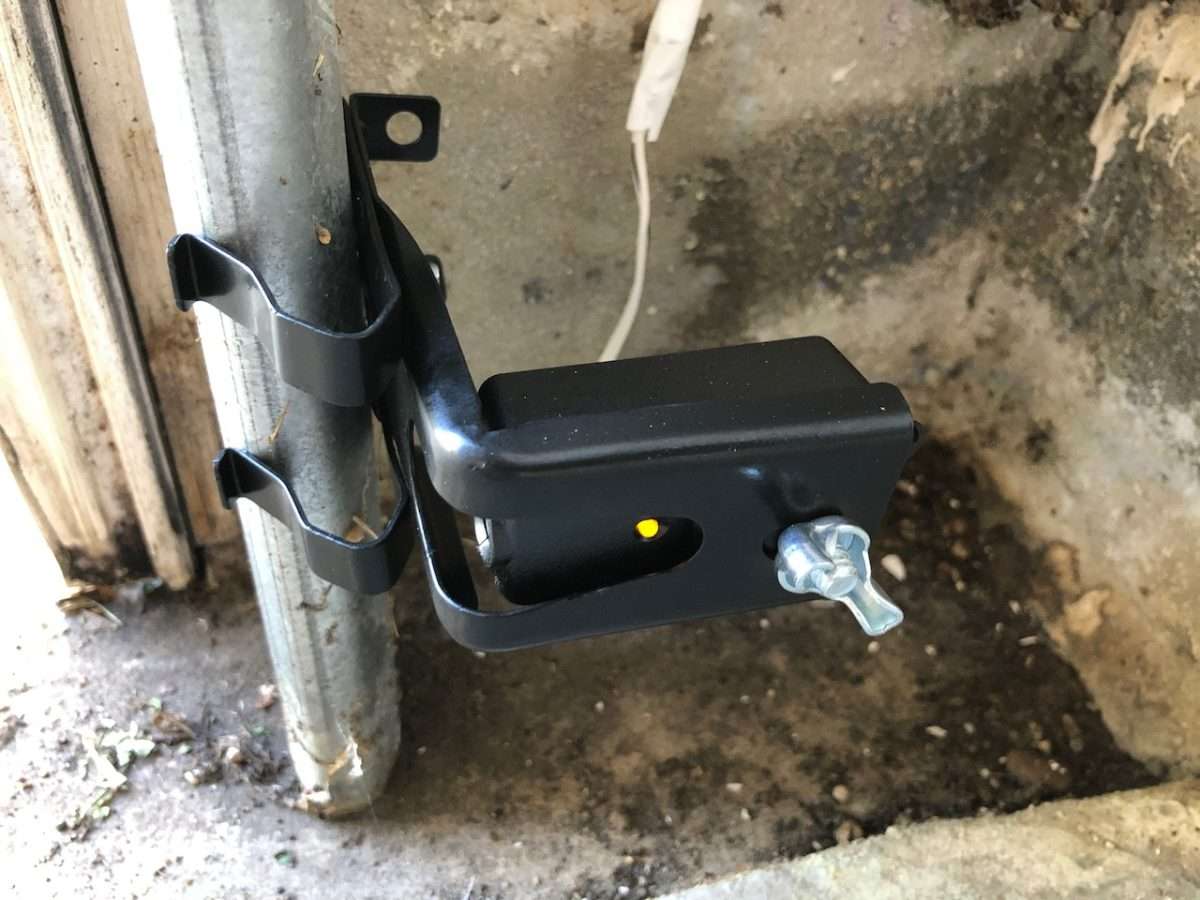
If one of your garage door sensor lights is yellow, amber, or orange (depending on how you see it), then you most likely have a LiftMaster, Chamberlain, or Craftsman garage door opener. The Chamberlain Group, who manufactures these brands, uses a yellow light for the sending sensor.
A solid yellow light is correct, and it should always be shining solid. If not, the only explanation is the sensor has lost power. At this point, you need to trace the wire back to the motor head and check all connections. You might have a broken wire or loose connection causing your issue.
Do Both Safety Sensors Need to Be Green?
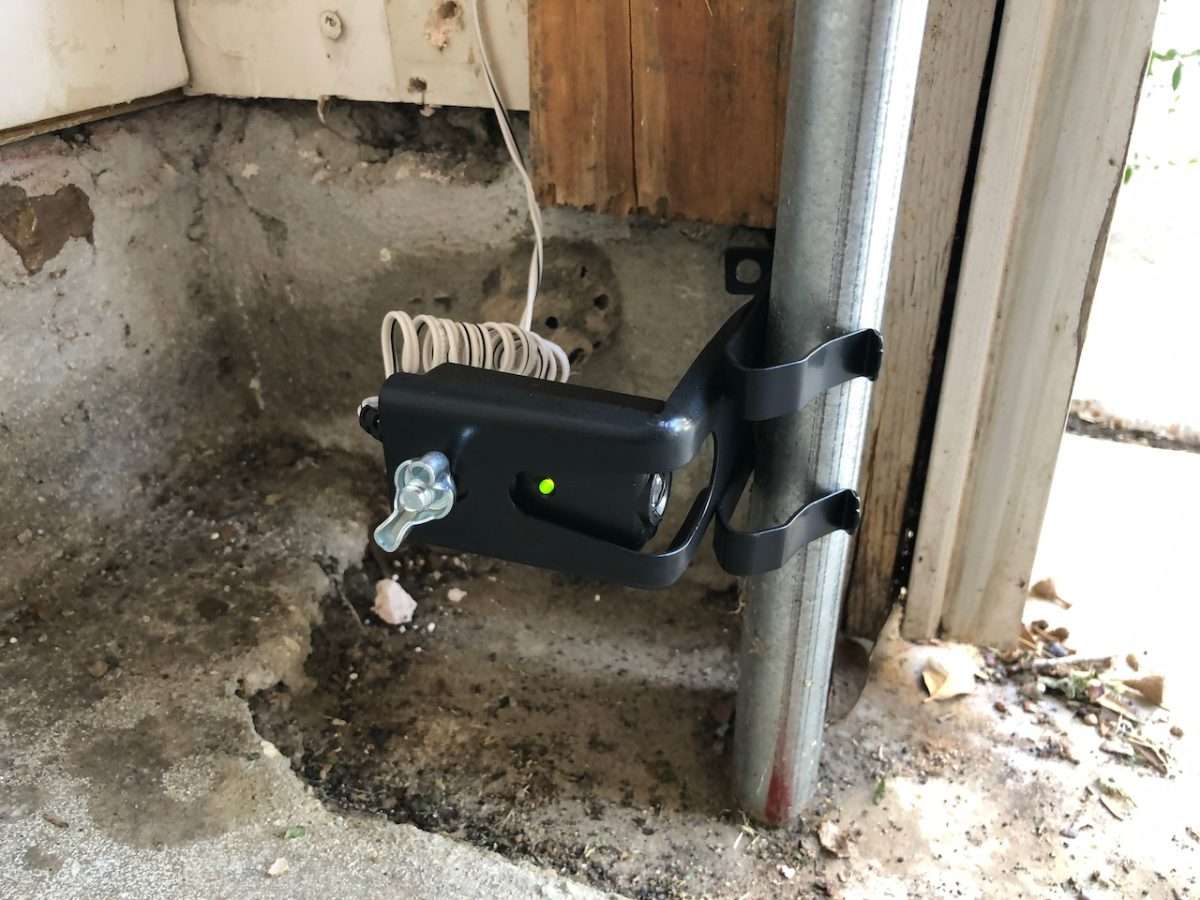
No. LiftMaster, Chamberlain, and Craftsman garage door openers use a green light for the receiving sensor and a yellow light for the sending sensor. If the green light is off, flickering, or flashing, then the sensors are not aligned properly.
Why Is the Garage Door Sensor Blinking Green?
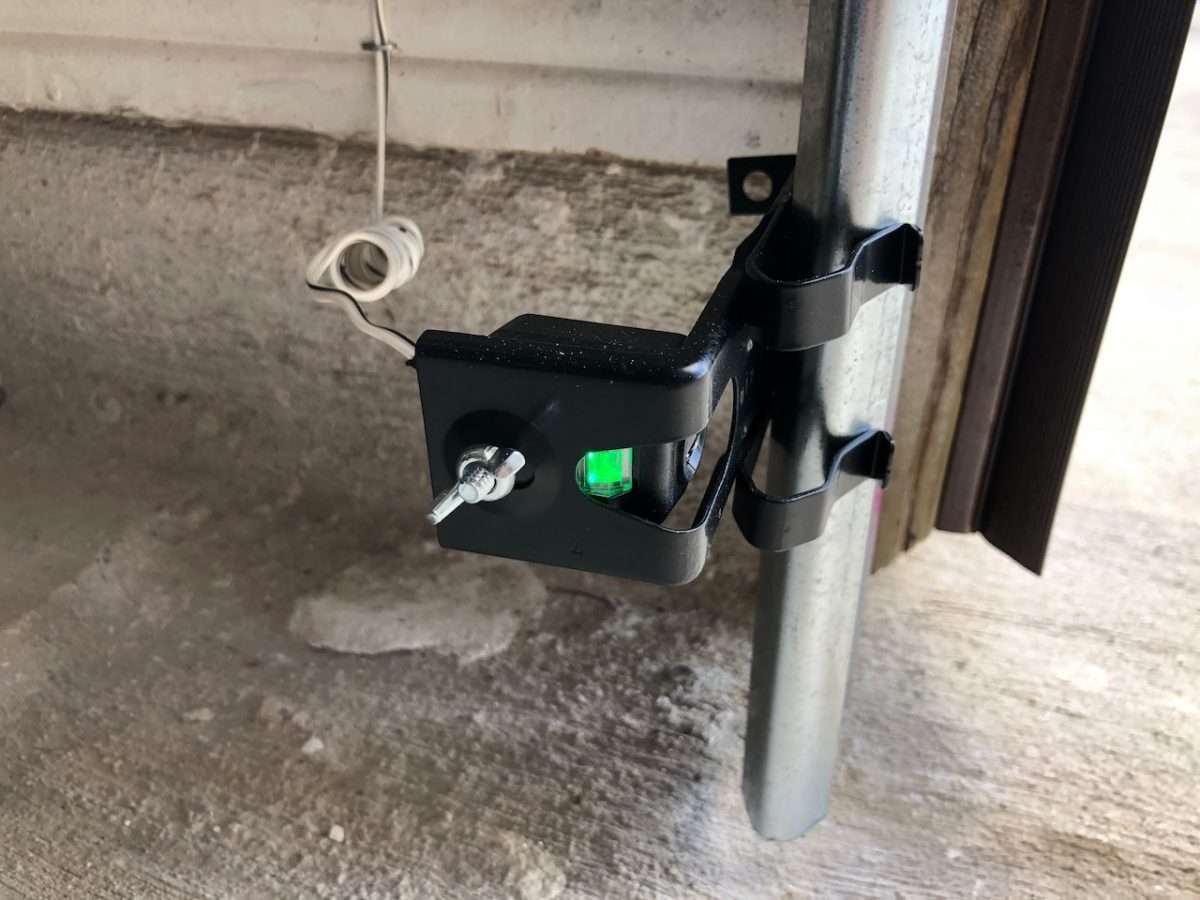
If you have a green safety sensor blinking or flickering, this means the safety sensor does have power, but it is misaligned. Older LiftMaster, Chamberlain, and Craftsman receiving sensors would cut off completely or flicker a little when they were misaligned.
The newer style green light receiving sensors (pictured above) that Chamberlain released in 2021 actually blink green when they are misaligned. This is a better system because the blinking light tells you it is misaligned, and the unit has power. Previously, when they would completely shut off, you never knew if it was an alignment or lack of power issue.
Genie and Overhead Door Safety Sensor Light Colors
Genie and Overhead Door branded garage door openers are both manufactured by The Genie Company. They use the same safety sensors on their garage door openers. Let’s go over some common safety sensors questions related to this popular brand.
Why Is One of My Garage Door Sensors Red and the Other Green?
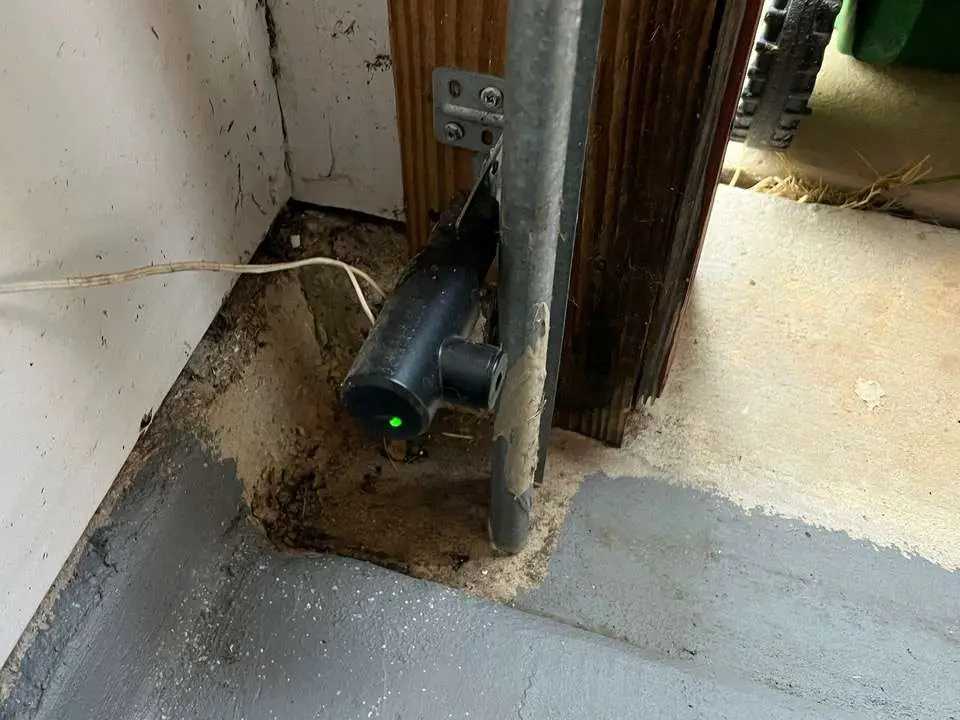
Genie and Overhead Door garage door openers use one green and one red light on their safety sensors. The green sensor is the sending unit that shoots the infrared signal out, and the red safety sensor is the receiver. When both lights are solid, you are operational.
Why Is the Garage Door Sensor Blinking Red?

If the receiving sensor is blinking red, this means the sensors are out of alignment or the sending sensor with the green light may not have power. Because the receiving sensor blinks red and doesn’t shut off, it allows you to determine there is power going to the sensor, and it just needs to be aligned.
What are the 3 Blinking Lights on My Garage Door Sensor?
If your Genie or Overhead Door garage door opener red sensor light is blinking, it is trying to tell you something. Two blinks from the red sensor light while the green light is solid means the beam is not aligned or something is obstructing the beam. If aligning the sensor doesn’t resolve your issue, the sensors could be defective and need replacement.
If the red safety sensor light is blinking three times while the green light is solid, your sensors are receiving some type of interference. This is commonly found in garages that have multiple openers. A receiving sensor may be getting interference from a sending sensor on a different garage door opener because all the sensors are lined up. If so, the orientation needs to be reconfigured to eliminate this issue.
Safety Sensor Lights Not On? Here’s Why
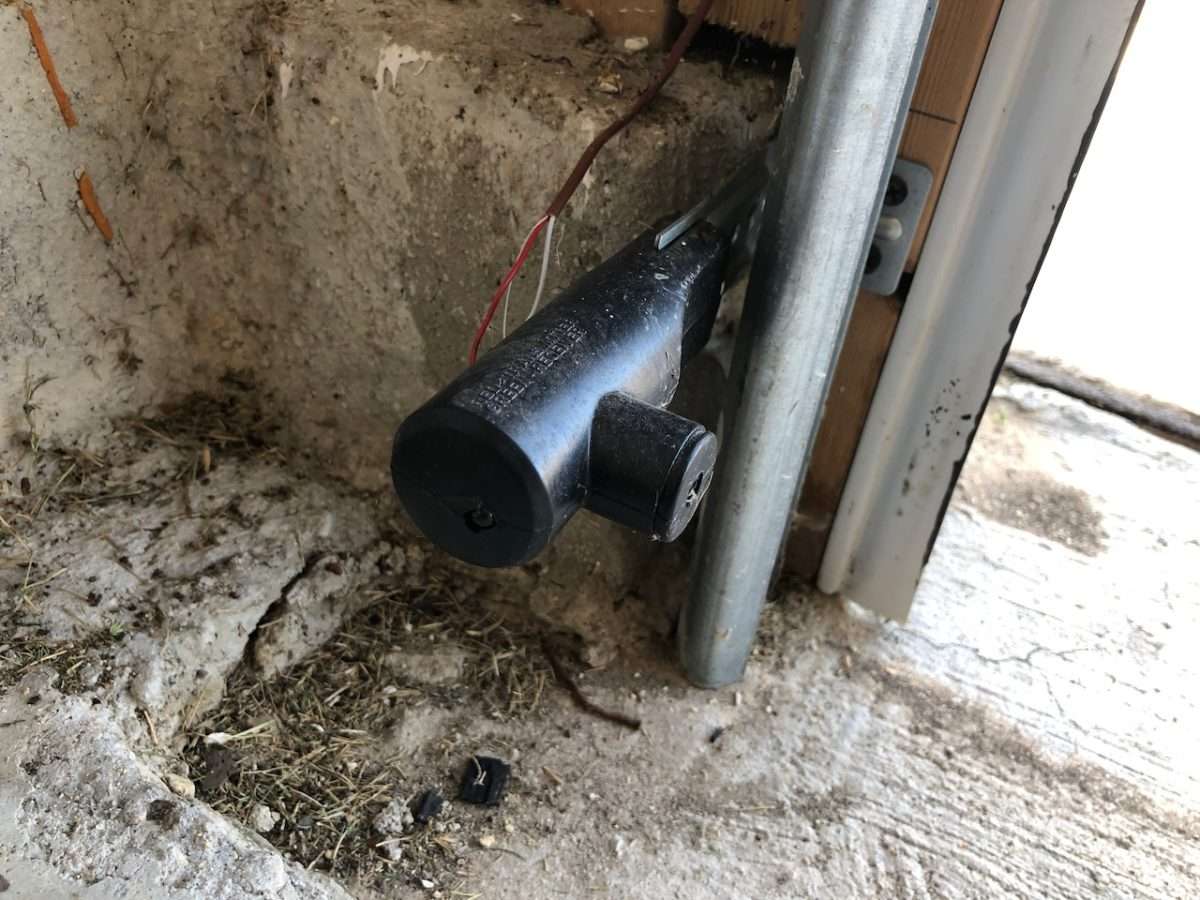
No Power to the Garage Door Opener
One reason the sensor lights may be off is because there is no power going to the garage door opener. If you go to press the button and there is no response, you may need to check the outlet in the ceiling for power. If there is no power, check to make sure there isn’t a tripped GFCI outlet in the garage.
Many new homes are wired so the outlet in the ceiling for the garage door opener is run off a GFCI outlet on one of the side walls in the garage. Many times, all you have to do is reset the outlet by pushing the button, and the power to the opener will be restored. If that doesn’t resolve your issue, you can check your breaker box or call an electrician.
Newer Openers with DC Motors
Newer garage door openers that have DC motors will sometimes incorporate energy saving features into their openers. One of these features is the safety sensor lights will cut off after so many minutes of inactivity. If you have a newer opener and the lights are not on, try pressing the button to activate the unit to see if they come on.
Some brands of openers will not activate the lights while the door is being opened. But, as soon as you go to close it, the safety sensor lights should come back on. We are starting to see this more and more as newer technologies are introduced with garage door openers.
Why is My Garage Door Opening But Not Closing?
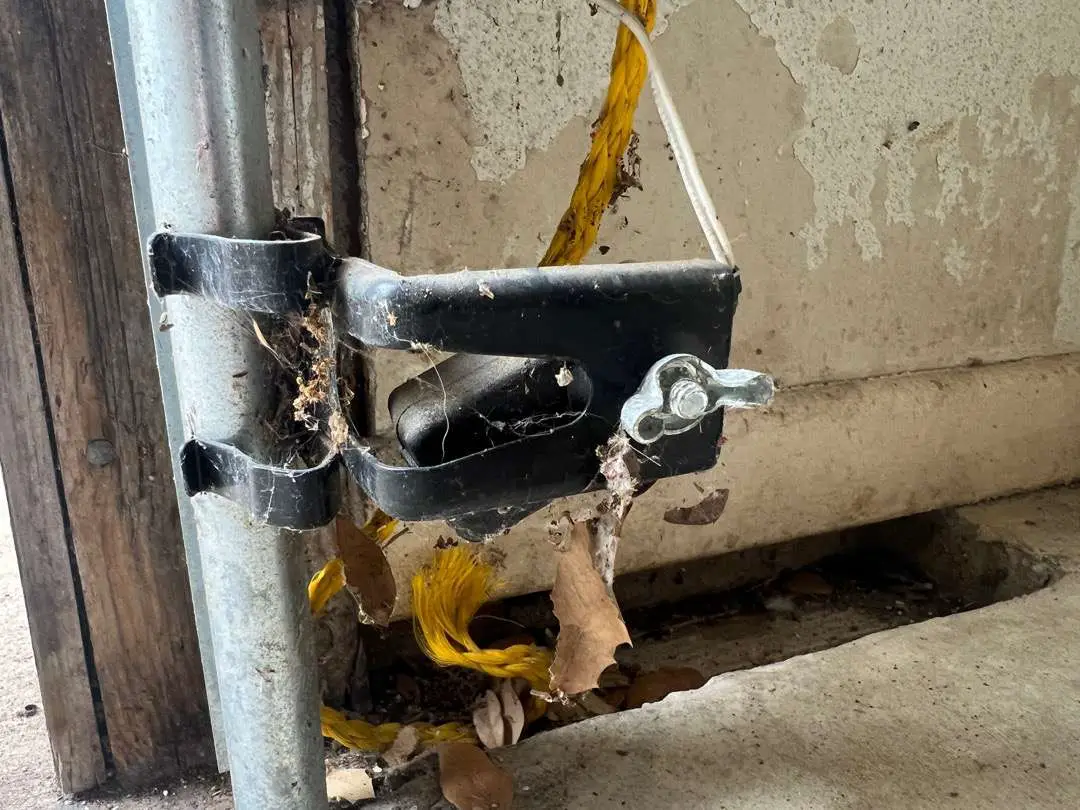
Garage door safety sensors are only active on the down. If you have to hold down the wall button to close, the safety sensors are most likely misaligned or obstructed. Safety sensors are not active when a garage door opener is moving in the up cycle.
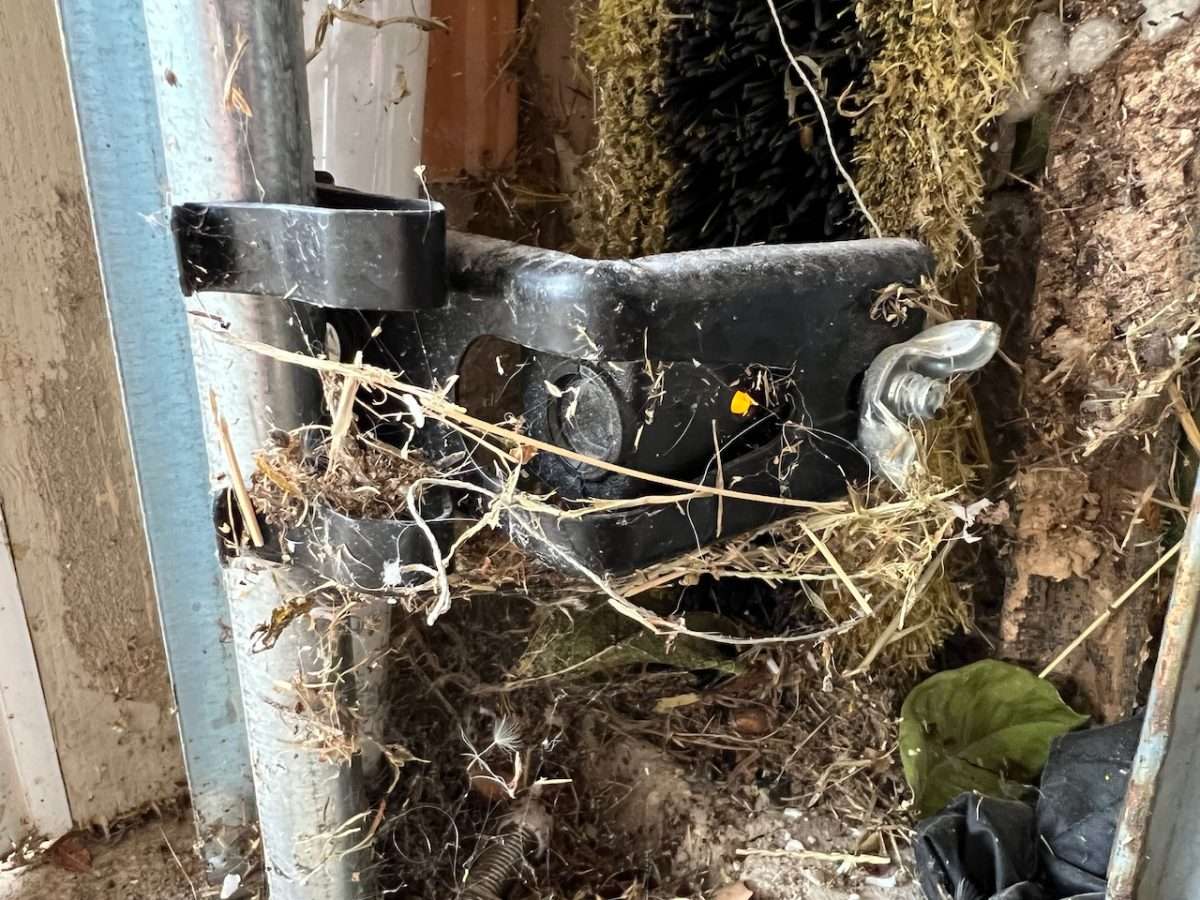
Because safety sensors sit down at the bottom of the garage door, they collect all types of debris. Leaves, grass, and spider webs can accumulate, causing a blockage that will interfere with the safety sensor signal. Make sure to always visually inspect this area to make sure all debris is out of the way.
How To Align Garage Door Sensors
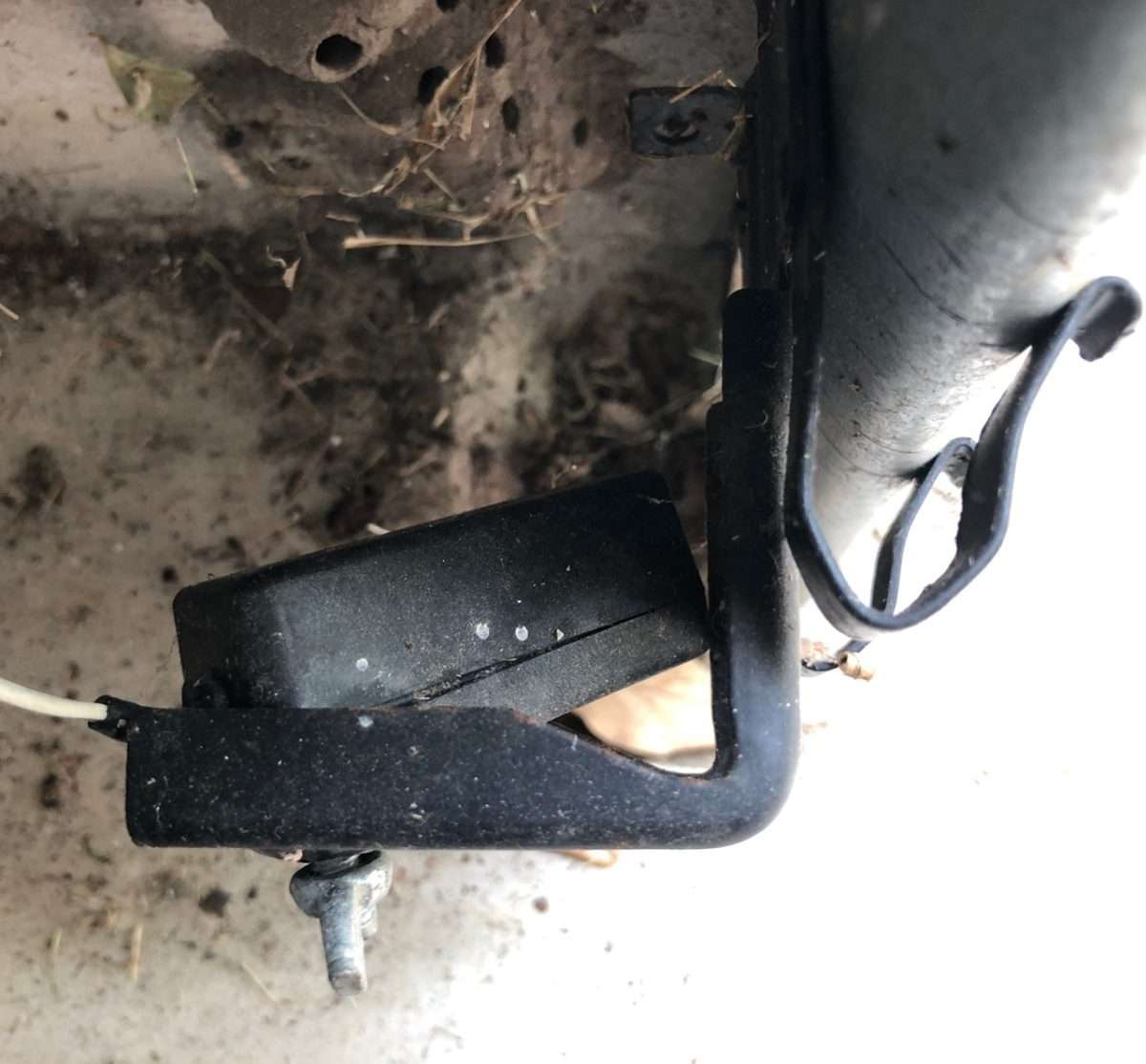
To align the safety sensors on your garage door opener, you first need to make sure both sensors are mounted the same height off the ground. Next, each safety sensor needs to be laying level with the ground, so you know they are the same.
Lastly, make sure the sensor has not been hit or bumped, causing it to face outside the garage like pictured above or inside the garage. If it is, you must walk up to the sensor and look down at the top of the sensor. Make sure the housing of the sensor is parallel to the garage door wall the tracks are mounted on. You can also use the concrete key as a guide to line up the sensor to make sure it is firing straight across the opening.
Remember, if the sending sensor is off a little, it can cause the infrared beam to be way off over the course of a 16ft or 18ft span on double car width garage doors. Small adjustments can make a big difference.
How Do I Know if My Garage Door Sensors Are Lined Up?
The way you know your safety sensors are aligned is the lights on both sides will be solid. Keep in mind, some safety sensor lights may look solid from a distance, but once you get close, they could be flickering lightly. If that is the case, try making a small adjustment, which should resolve the issue and make a stronger connection.
Why Are My Garage Door Sensors Aligned but the Door Won’t Close?
If your garage door safety sensors are showing the lights to be solid as if they are aligned properly and the garage door won’t close, you most likely have a defective safety sensor that is giving a false reading. At that point, you will want to replace the safety sensors.
How To Replace Garage Door Sensors
Replacing your garage door sensors will be your last resort if you have already tried aligning the sensors and checked all the wiring to make sure it is not damaged. Safety sensors can take a beating in a garage with all the bicycles, trash cans, garden tools, and everything else that is moved in and out.
Safety Sensor Wire Polarity
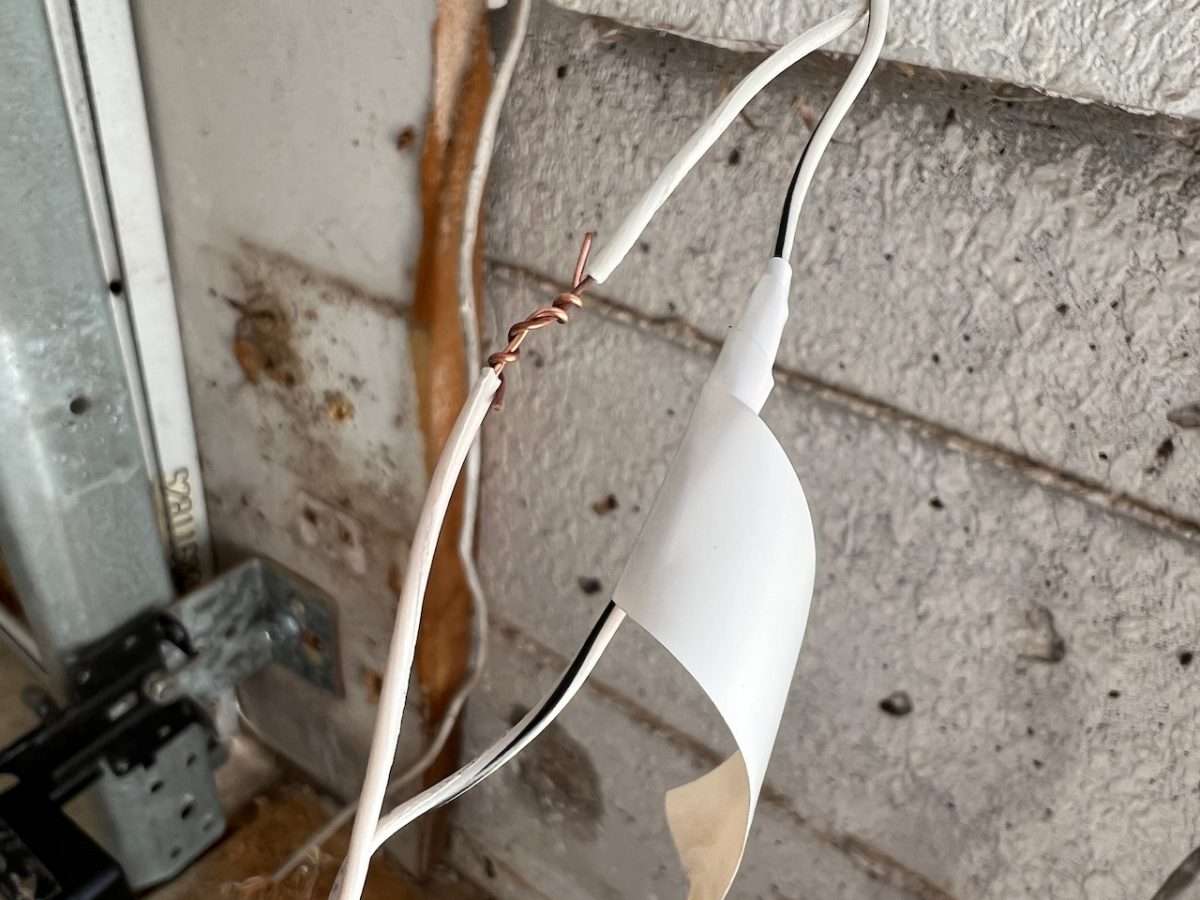
The main thing you need to keep in mind when installing new safety sensors is the polarity of the wire. Chamberlain, LiftMaster, and Craftsman garage door openers use polarity, which means you need to make sure the white and black wires are kept in their original orientation. If you get it backwards, it won’t damage anything. All you have to do is switch the wires.
Most other brands of garage door openers don’t use polarity, which means it doesn’t matter how you reconnect the two wires when replacing the sensors. Because the wiring is low voltage, you can replace the sensors with the unit plugged in because there is no risk of shock. This also allows you to quickly see if there is power when making connections, which is helpful.
Twist Wires and Use Electrical Tape on Wire Splice
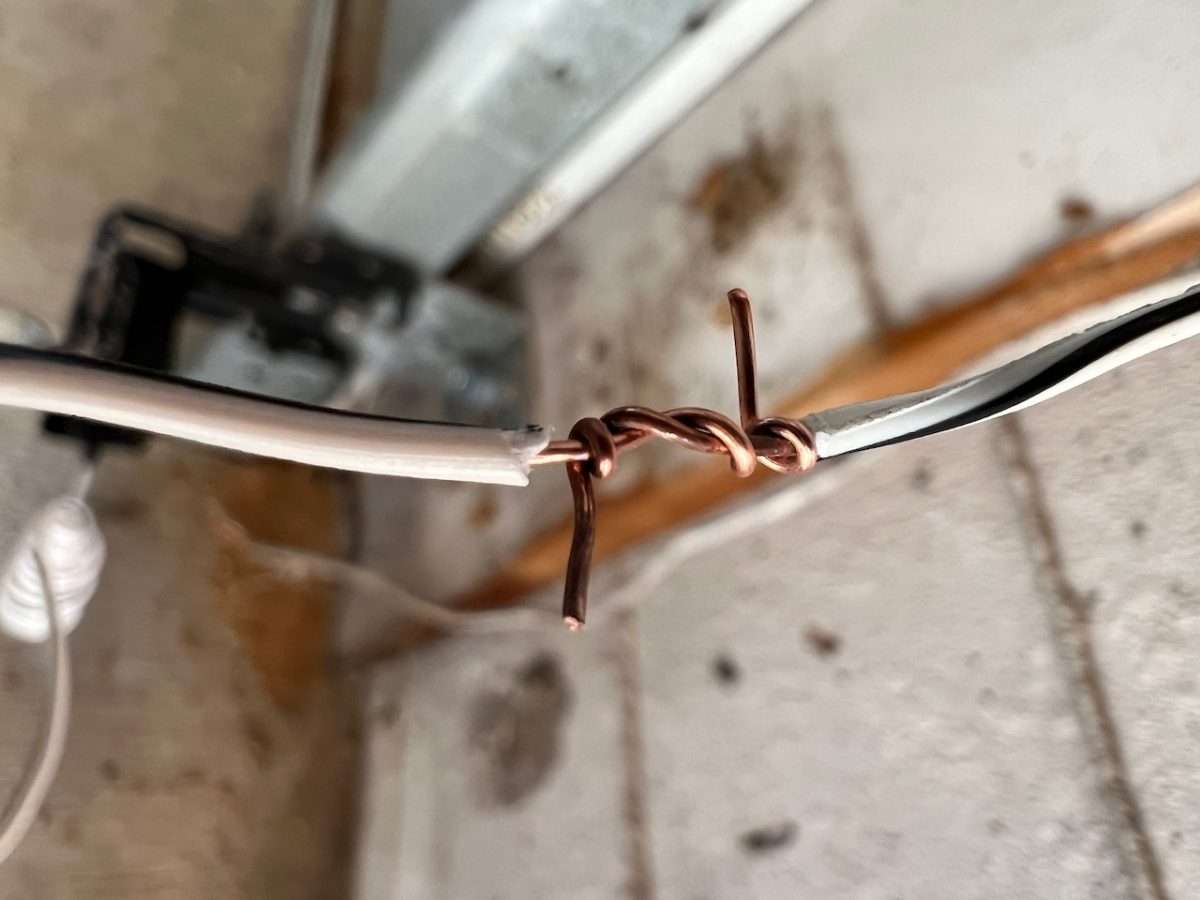
When installing new safety sensors, we twist the wires together the old school way, so the wires can’t be pulled apart. This makes for a better connection and allows the wire to remain straight for easier application of the tape. We tried using fancy connectors in the past, only to have them fail and cause repeat service calls.
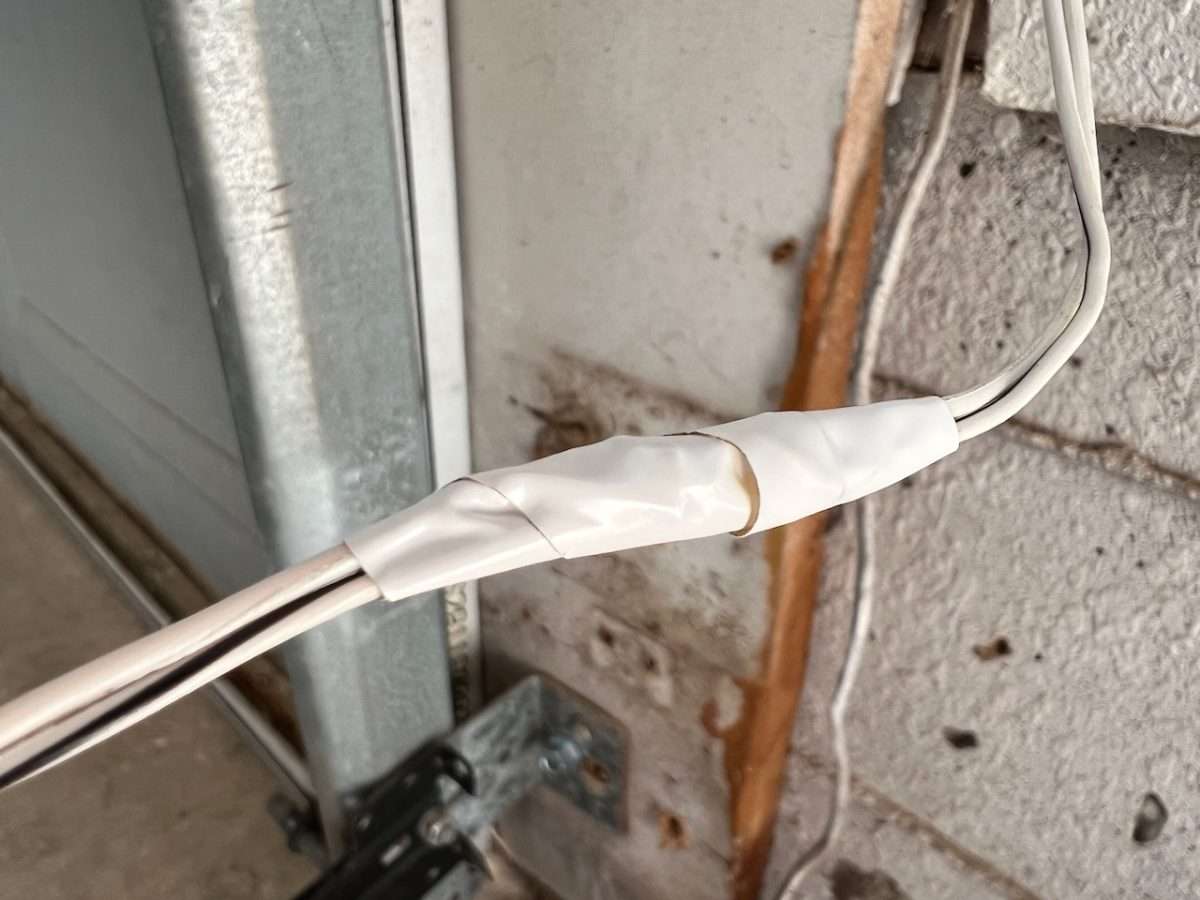
After making the connection for the new safety sensors, it should look something like the picture above. We switched to using white electrical tape a few years back because it blended in better with the wiring and most interior walls in garages.
Safety Sensors Mounted 6” Off The Ground
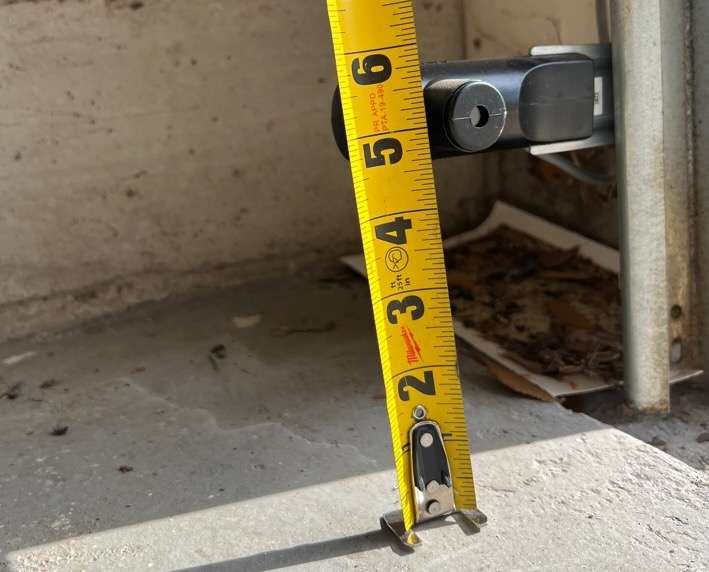
All safety sensors for garage door openers are required to be mounted no more than six inches off the ground. It is important to make sure this is correct if you’re having a new garage door opener installed. The reason for this is if you ever sell or rent the home, the garage door opener will pass inspection because the equipment was installed properly.
Bolt Sensors to Vertical Tracks
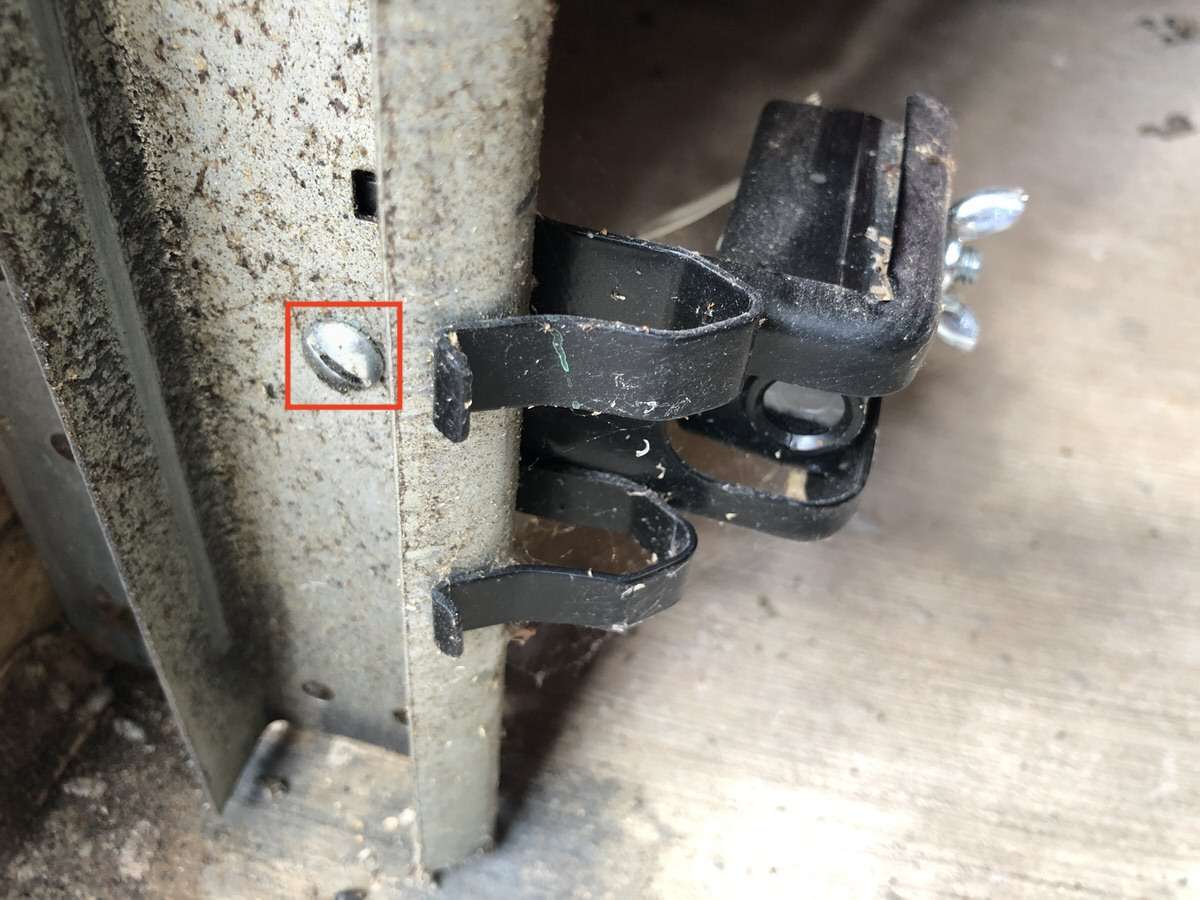
Chamberlain, LiftMaster, and Craftsman garage door openers use Chamberlains snappy bracket to attach the safety sensors to the vertical tracks. While these brackets do work well, they can have a tendency to move or come off when bumped. We use a small track bolt with a carriage head to bolt the snappy sensor brackets to the vertical tracks, which dramatically reduces sensor alignment issues.

If you have a Genie or Overhead Door garage door opener, you can bolt the safety sensors to the vertical tracks if that is a better option for your situation. The sensor brackets have predrilled holes in them that make attachment easy.
Make Sure Vertical Tracks are Secure
If you are choosing to bolt the safety sensors onto the garage door vertical tracks, you will want to make sure the tracks are tight to the wall. Any movement in the track as the garage door is closing can cause sensor misalignment, which could cause your garage door to reverse and go back up.
Twist Wires Together at Motor Head
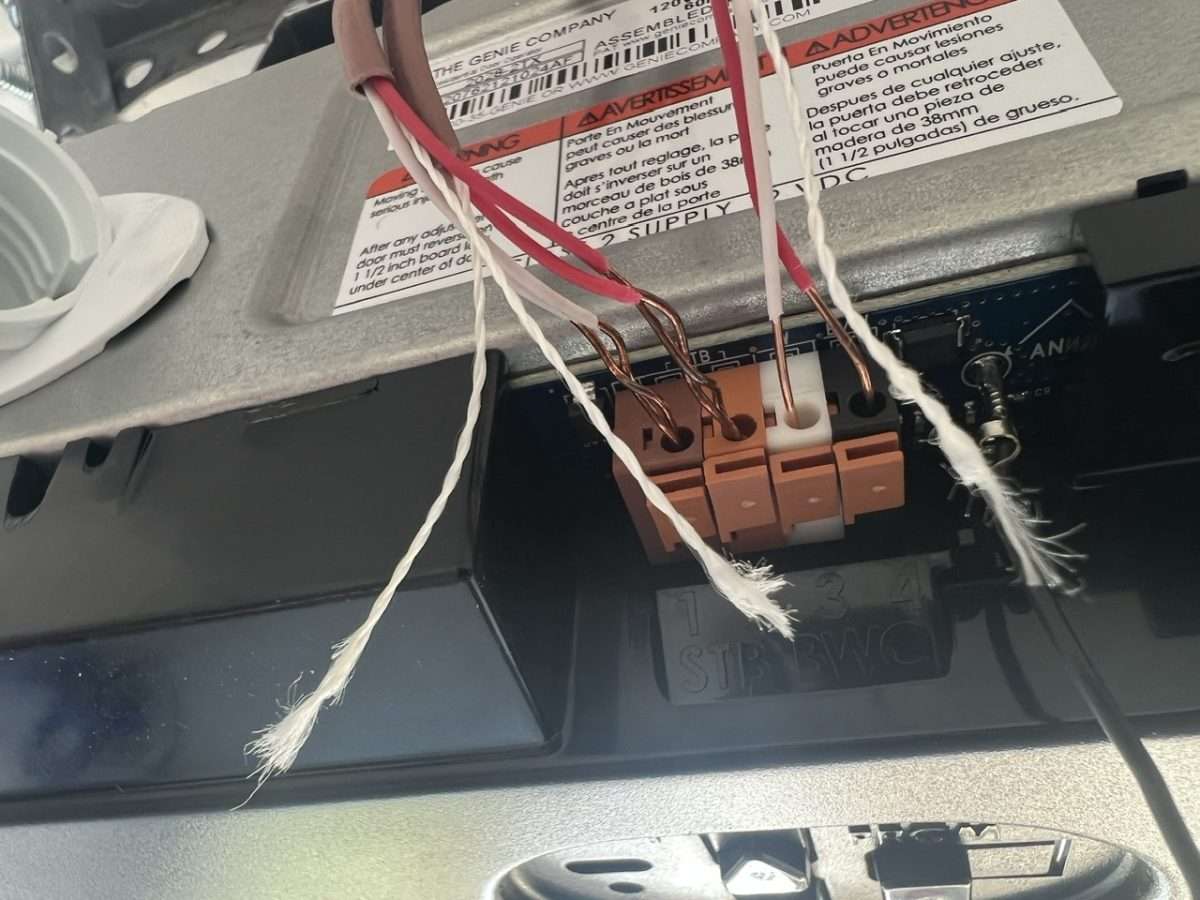
If you’re installing a new garage door opener, and you need to insert two wires into the same hole, always twist the wires together. This will make a much better connection and eliminate any intermittent connection issues due to vibration.
Secondly, make sure the wires that are exposed are not touching each other. This could cause your opener to reverse when opening or closing. It’s best to only strip back as much insulation as you need to get the wires inserted.
Do Not Run Wires Through Garage Door Tracks
When installing safety sensor wires on the walls and ceiling, make sure to never run the wires through the garage door tracks or punch angle. The wire should always be kept several inches away from all garage door parts, so it doesn’t get caught during operation. This will also eliminate the wire from getting nicked by the metal and shorting out.
Replaced Sensors and Still Not Working?
If you installed new safety sensors, and they are still not lighting up, you most likely have an issue with the wiring going back to the motor head. If the house is prewired, you will need to check continuity in the wiring to make sure the wire was accidentally damaged in the attic or inside the walls.

If the wiring is run on the outside of the sheetrock, closely inspect the wire to make sure it has not been damaged and there are no staples penetrating the wire. This is one of the most common reasons why safety sensors stop working.
Can the Sun Shine on Garage Door Sensors?
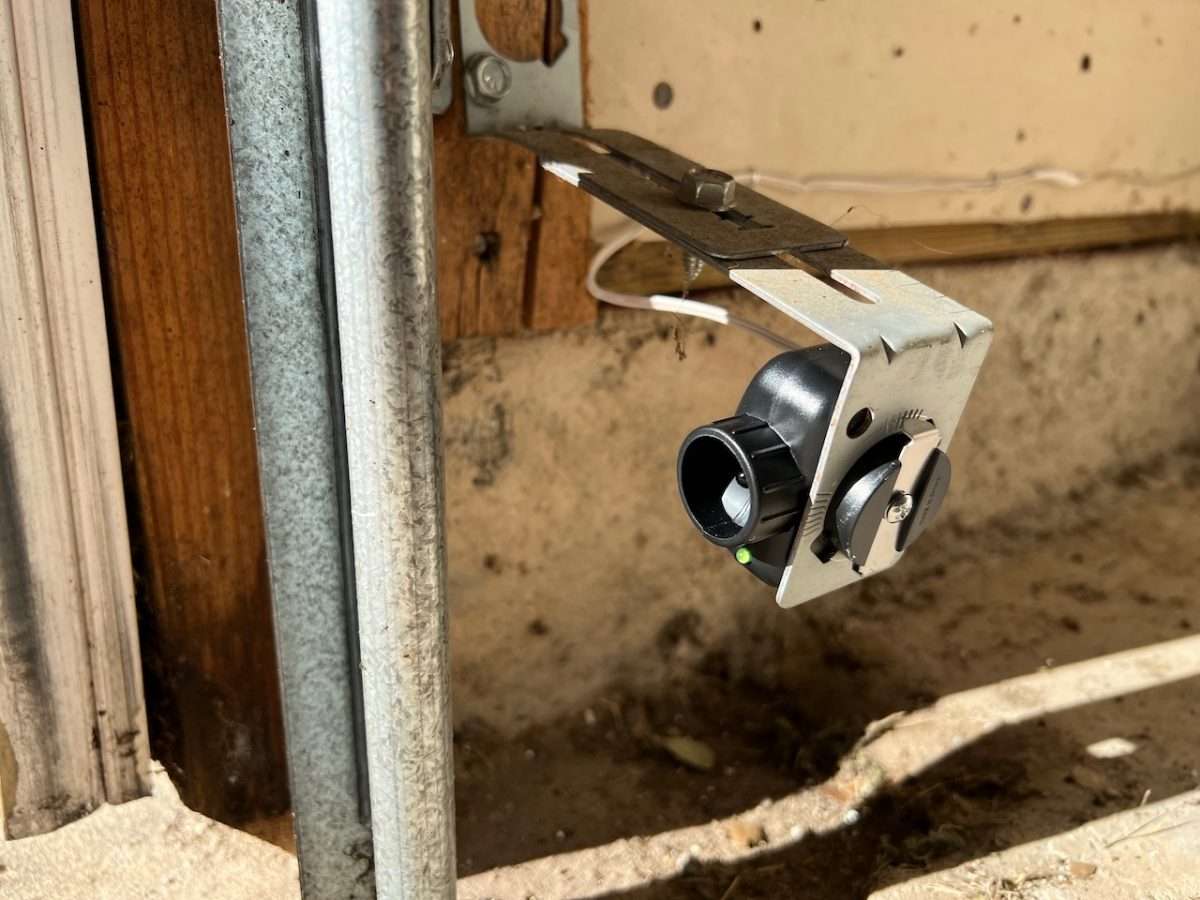
Sun shining into a garage can cause interference with garage door sensors if the correct safety sensor is not installed in the sun. Here is a quick breakdown for a few popular brands that details which sensor should be installed in the shade.
Chamberlain, LiftMaster, and Craftsman Openers
- Receiver (green light) in the shade
- Sender (amber light) in the sun
Genie Openers
- Receiver (red light) in the sun
- Sender (green light) in the shade
Linear Openers
- Receiver (red and green light) in the shade
- Sender (green light) in the sun
Marantec Openers
- Sender (green light) in the sun
- Receiver (red light) in the shade
Guardian Openers
- TX-Sender (green light) in the sun
- RX-Receiver (red light) in the shade
Garage Door Sensor FAQ’s
How Many Sensors Does a Garage Door Opener Have?
An automatic garage door opener has two safety sensors which are usually located by the vertical tracks no more than six inches off the ground. One sensor is the sender and the other sensor is the receiver.
How Do I Know if My Garage Door Sensor Is Getting Power?
All newer style garage door opener sensors will let you know they have power because a light will be shining. The light can be solid or blinking, but because there is a light, that means power is going to the sensors.
There are some older safety sensors that will be harder to determine if they have power because the light goes off when they are misaligned. All you can do in that situation if you have already aligned the sensors is try replacing them to see if the light comes back on. If that doesn’t work, the wiring could be bad.
Will My Garage Door Opener Work With One Sensor?
No. Because one safety sensor is sending the signal and the other is receiving the signal, both are required for your automatic garage door opener to function properly.
Do Garage Door Sensors Go Bad?
Yes. Garage door opener safety sensors go bad all the time. This could be due to age or normal wear and tear. If the sending sensor that shoots out the infrared beam starts to get weak, it could cause intermittent issues with the receiving sensor. This is more common on double car width doors like 16ft and 18ft widths.
More commonly, safety sensors need to be replaced because they have been hit several times or because they have gotten wet. Because safety sensors stick out past the garage door vertical tracks, they are susceptible to being hit by trash cans, rakes, bicycles, or anything else in the garage.
How Do You Test Garage Door Sensors?
The only way to test safety sensors is to first start by making sure they are aligned and running the automatic opener. If the garage door doesn’t close and both lights are shining on the sensors, they may need to be replaced.
Because a sending sensor can get weak over time, it may be showing a false reading by shining a bright light, but the beam is not strong enough to make a complete connection with the receiving sensor.
Can You Bypass Garage Door Sensors?
There is no way to turn off or bypass garage door safety sensors on your automatic opener. You can close your garage door by holding down the wall button inside your garage until it completely closes. This is a manual override for when your safety sensors are misaligned or malfunctioning.
Will My Garage Door Opener Work With No Sensors?
No. All garage door openers manufactured after 1993 are required to have safety entrapment sensors installed no more than six inches off the ground. There is no way to override the safety sensors on a garage door opener.
When Did Garage Door Sensors Become Mandatory
Safety sensors on automatic garage door openers became mandatory in 1993 by the Underwriters Laboratories 325 standard, or “UL 325” for short. This meant that any garage door opener manufactured in 1993 or after would have to include infrared safety sensors in order for a garage door to close. Safety sensors are also referred to as safety entrapment devices.
Conclusion
Garage door sensors have been a thorn in the side of thousands of homeowners since they were first introduced in 1993. Millions of dollars have been spent over the years on service calls directly related to sensor misalignment. Hopefully, this article has provided some valuable tips that will save you hundreds of dollars in repair bills over the years.
